Using Visual Supports in ABA Therapy to Improve Learning
Harnessing The Power of Visual Aids in Autism Therapy
Understanding Visual Supports in ABA Therapy
In the realm of Applied Behavior Analysis (ABA) therapy, visual supports have emerged as vital tools for improving the learning experiences of individuals with Autism Spectrum Disorder (ASD). These supports range from drawings and photographs to tactile symbols and choice boards, each designed to bridge communication gaps and provide a clearer understanding of daily tasks and routines. This article delves into the significance of visual supports in ABA therapy, how they contribute to learning and communication, and practical ways they can be implemented for children diagnosed with ASD.
The Essence and Significance of Visual Supports
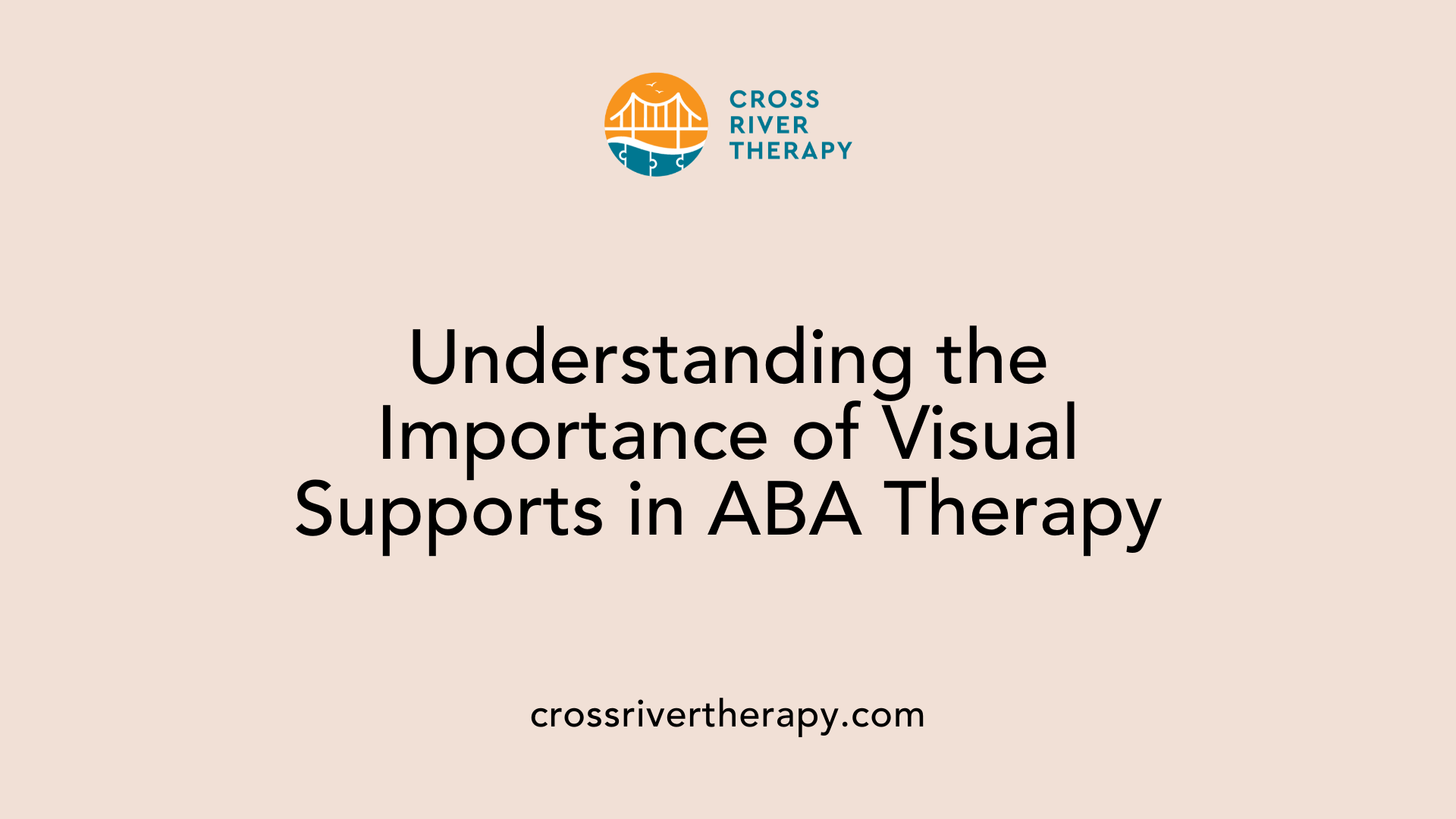
What are visual supports in ABA therapy?
Visual supports in Applied Behavior Analysis (ABA) therapy are essential tools that enhance communication and understanding for individuals with autism spectrum disorder (ASD). These supports can include pictures, charts, schedules, and real objects that help clarify expectations and routines.
By providing a visual representation of concepts or instructions, visual supports can reduce anxiety and increase engagement during therapy sessions. They assist in promoting independence by allowing individuals to navigate their activities and environments more freely. Overall, visual supports create a more structured and predictable framework, significantly enhancing learning and behavioral outcomes in ABA therapy.
Why are visual supports important for children with autism?
Visual supports are important for children with autism because they help reduce anxiety and provide a clear structure, crucial for navigating their environment. These supports offer visual cues that clarify expectations and transitions, making it easier for children to understand what is happening and what is required of them.
By minimizing uncertainty, visual supports can also help decrease problem behaviors that may arise from frustration or confusion. They play a critical role in functional communication training (FCT), empowering children to express their needs, such as asking for a break or requesting changes in activity.
Overall, visual supports enhance communication and reinforce positive behaviors, ultimately fostering better engagement and compliance in children with autism.
Key Types of Visual Supports
| Type | Description | Purpose |
|---|---|---|
| Visual Schedules | Displays a sequence of tasks using pictures or symbols. | Helps children anticipate routines, reducing anxiety. |
| Choice Boards | Offers various options visually or with objects. | Empowers decision-making for individuals with limited language. |
| Communication Boards | Utilizes images or written words for expression. | Aids nonverbal individuals in communicating effectively. |
| Social Stories | Narratives that provide context and expectation in social situations. | Enhances understanding of social norms and behaviors. |
Incorporating these visual supports into ABA therapy not only boosts communication skills but also contributes to a more structured environment, ultimately supporting the developmental needs of children with autism.
Types of Visual Supports and Examples in ABA Therapy
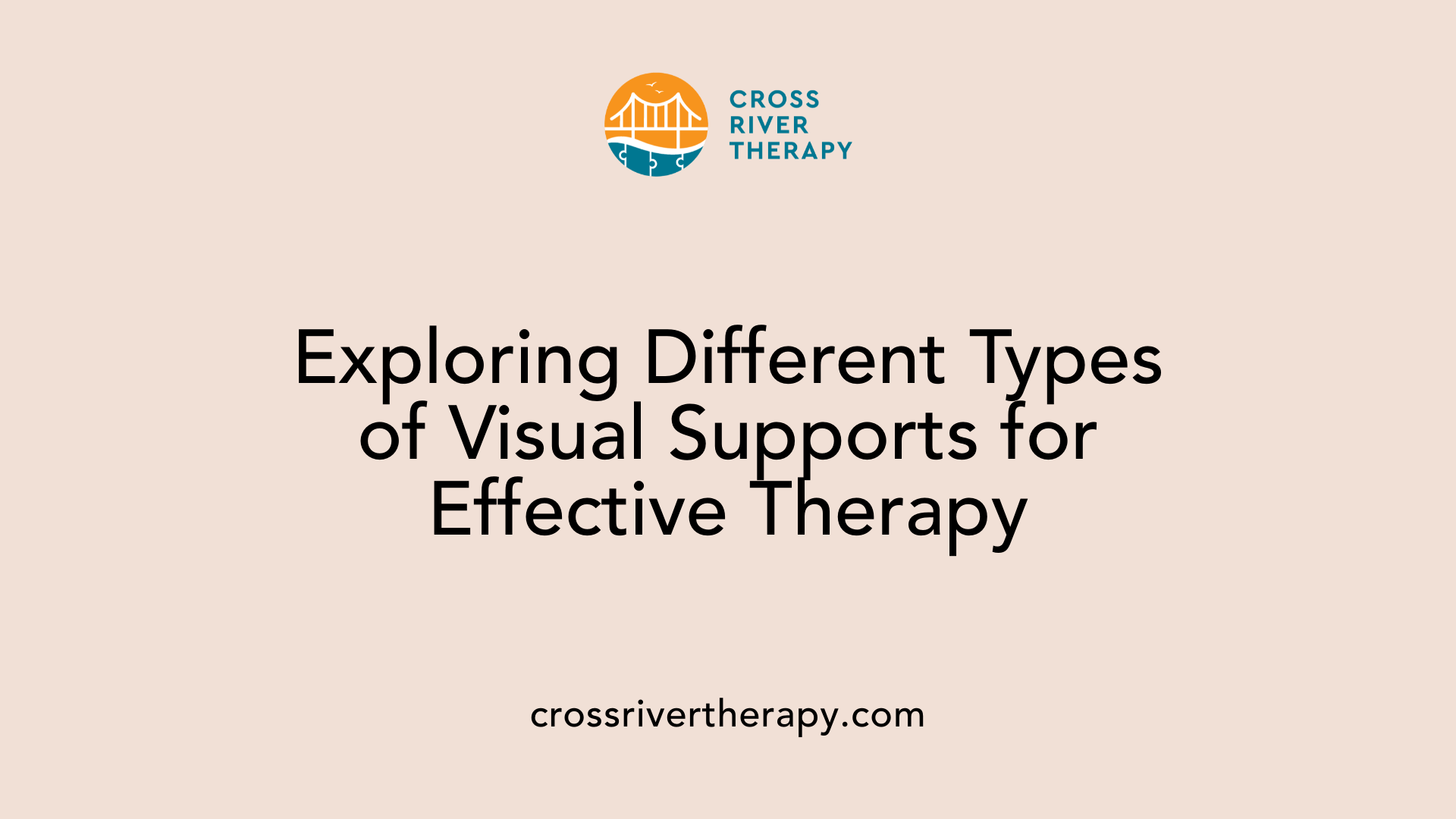
What types of visual supports are used in ABA Therapy?
Visual supports are essential tools in Applied Behavior Analysis (ABA) therapy, especially for individuals with Autism Spectrum Disorder (ASD). By employing various types, therapists can effectively enhance communication and learning. Common types include:
Visual Schedules: A series of pictures or symbols that outline upcoming tasks or events. This structure provides predictability and helps reduce anxiety.
Choice Boards: Interactive boards that present options for activities, meals, or tasks using images or objects, allowing individuals to communicate preferences easily.
Visual Scripts: Templates that guide social interactions or conversations, helping individuals prepare for expected dialogue.
Visual Cues and Prompts: Visual signals or reminders that assist in prompting desired behaviors or actions during various activities.
What is an example of a visual support used in ABA therapy?
An example of a visual support used in ABA therapy is a sequence of pictures depicting the steps of a routine or upcoming event, such as a visit to the dentist. These visual aids help children with Autism Spectrum Disorder (ASD) understand what to expect, thereby reducing anxiety and facilitating smoother transitions.
Another example is a visual schedule, which outlines daily activities using images or symbols, allowing the child to anticipate transitions and better understand their day. Additionally, visual timers can be utilized to illustrate the time remaining for specific tasks, helping these children manage their time effectively. Overall, these supports create a more structured environment that enhances learning and communication.
Table of Visual Support Examples
| Type of Support | Description | Purpose |
|---|---|---|
| Visual Schedules | Picture sequences of tasks/times | Reduces anxiety by providing predictability |
| Choice Boards | Options using images/objects | Empowers decision-making and clear communication |
| Visual Scripts | Guides for social interactions | Assists with dialogue preparedness |
| Visual Cues/Prompts | Signals or reminders | Prompts desired behaviors during activities |
Incorporating these visual supports not only aids in communication but also promotes independence and skill development for children with ASD.
Benefits of Visual Supports in Enhancing Learning and Communication
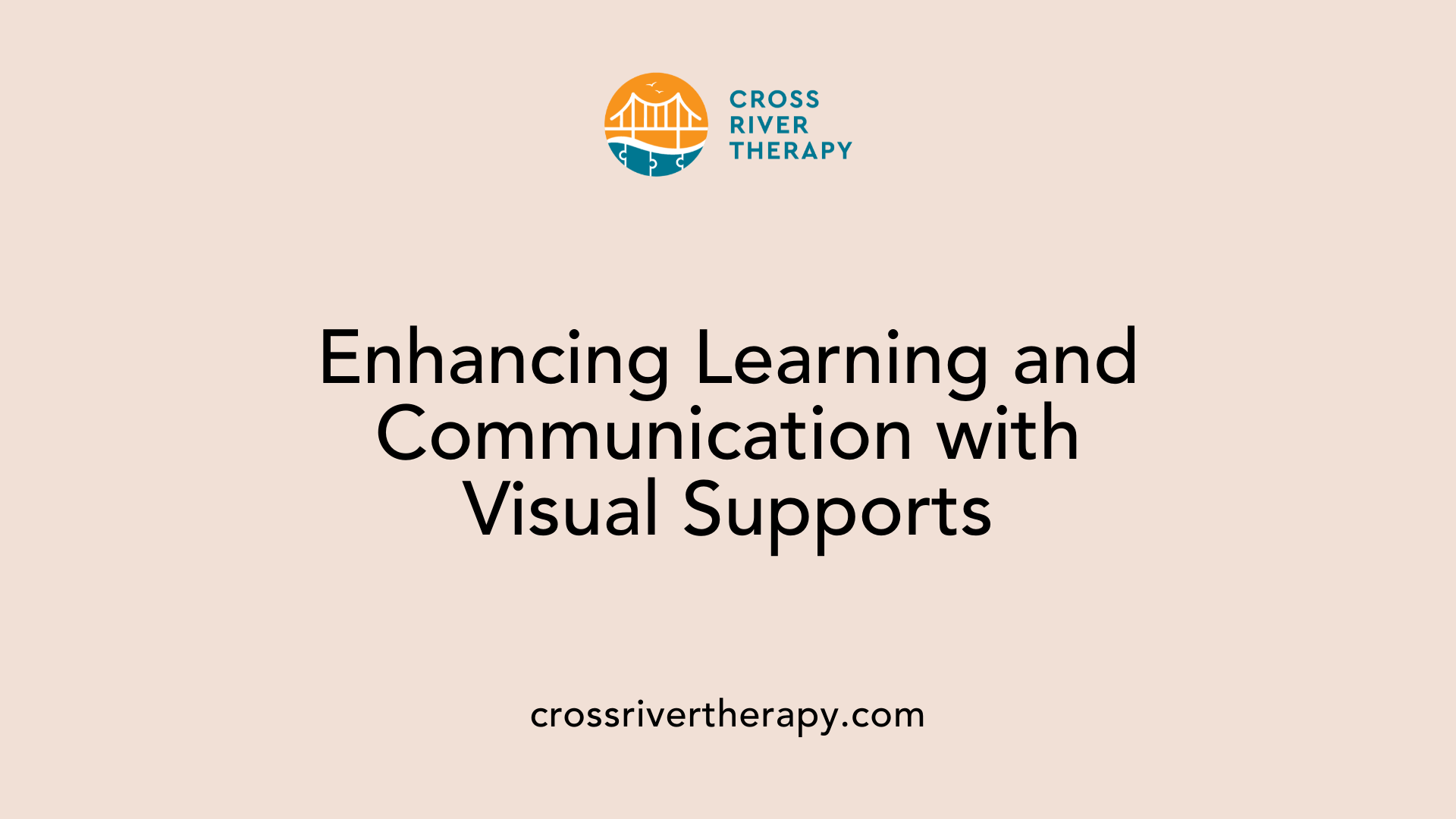
How can visual supports enhance learning and communication in ABA therapy?
Visual supports are powerful tools in ABA therapy, especially for children with Autism Spectrum Disorder (ASD) who face challenges with language comprehension and social communication. By utilizing items such as pictures, symbols, and visual schedules, therapists can create a structured learning environment that significantly enhances both comprehension and expression.
One of the main benefits of visual supports is their ability to provide consistent cues that help facilitate understanding. For instance, visual schedules outline the sequence of daily tasks with pictures, reducing anxiety around transitions and promoting predictability in the child’s routine. This predictability allows children to anticipate upcoming activities, leading to a calmer learning experience.
Visual supports also empower children, especially those who are nonverbal or have limited vocabulary. Tools like choice boards allow individuals to communicate preferences effectively. This fosters participation in decision-making processes and provides them with a sense of autonomy. By encouraging self-expression in a clear manner, visual supports help minimize frustration often associated with communication barriers.
Additionally, these supports can be adapted easily to cater to the individual needs of each child, making them highly effective. In a collaborative environment where parents, caregivers, and therapists work together, visual supports can be utilized consistently across various settings. This consistency is crucial for developing generalized skills that are transferable to real-life scenarios, significantly improving therapeutic outcomes.
Ultimately, incorporating visual supports into ABA therapy not only enhances communication skills but also promotes greater independence, helping children navigate social situations and daily tasks with more confidence.
Implementing Visual Supports Effectively
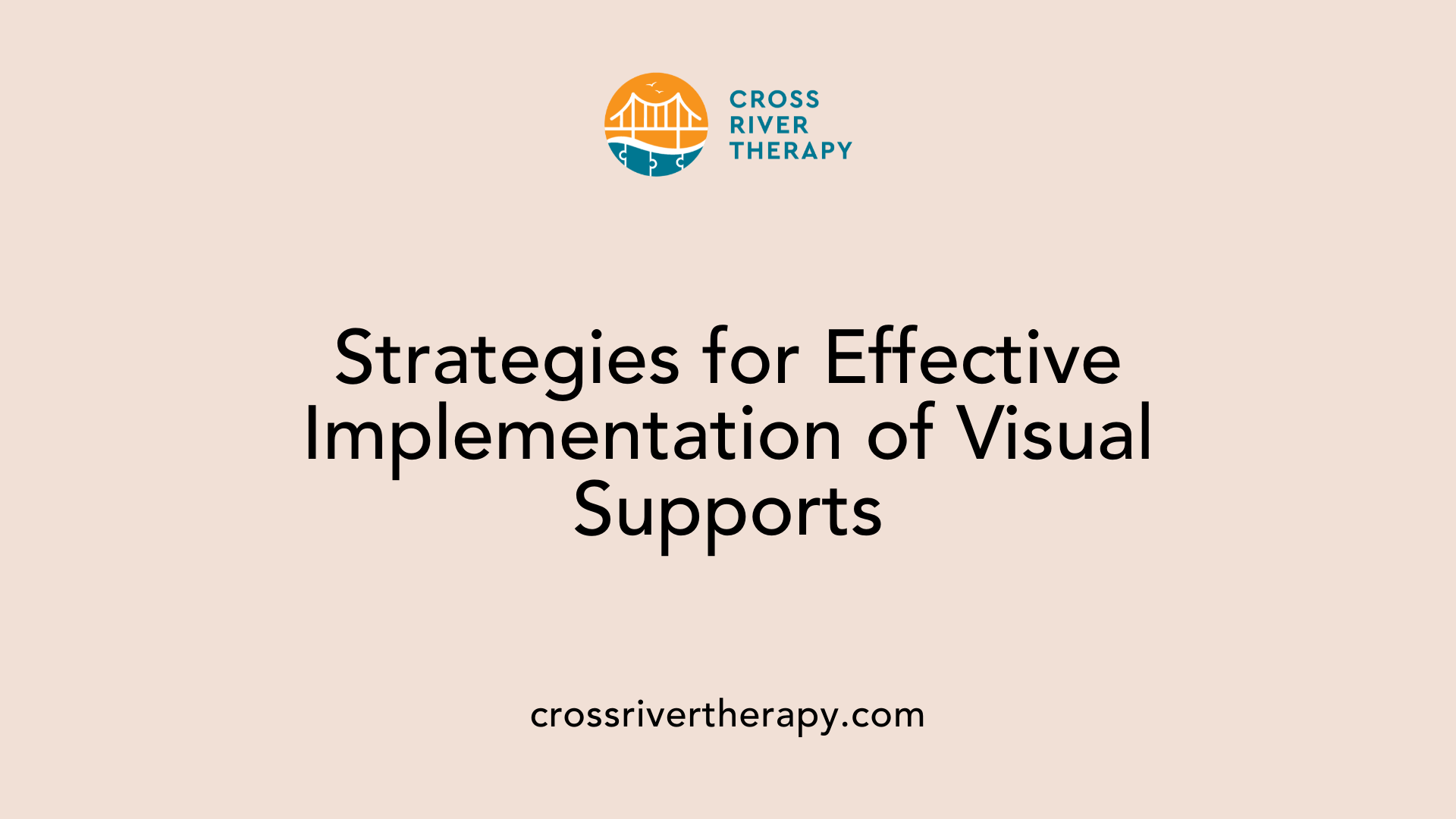
When should visual supports be used in ABA therapy?
Visual supports play a vital role in ABA therapy, particularly for enhancing communication skills and clarifying concepts for children with Autism Spectrum Disorder (ASD). They can include various elements such as pictures, symbols, gestures, and written words. By providing these tangible references, children are better equipped to process information, understand routines, and prepare for transitions in a clearer manner.
Using visual supports does not hinder speech development; rather, they aid communication by reducing frustration. An effective communication-supportive environment enhances these visuals through adult strategies and promotes opportunities for practice. Such integration allows children to express their needs more effectively and navigate their surroundings with increased confidence.
Strategies for implementing visual supports
To implement visual supports effectively in therapy, consider the following strategies:
- Utilize a Variety of Visuals: Incorporate pictures, symbols, and written words to cater to each child's preferences and learning styles.
- Create Structure: Use visual schedules and checklists to outline tasks, making daily routines predictable.
- Encourage Engagement: Involve the child in the creation of visuals, which can increase their investment in using these tools.
- Consistent Usage: Encourage caregivers and educators to apply the same visual supports in different settings, promoting generalized learning.
Collaborative efforts in using visual supports
Collaboration among therapists, parents, and caregivers is essential for the success of visual supports in therapy. Consistent application across home and therapy environments reinforces learning and communication skills. Regular discussions among caregivers can ensure that visuals are being utilized effectively and adapted to meet children’s evolving needs.
Personalization of visual supports
Each child benefits from personalized visual supports tailored to their individual preferences and communication styles. For instance, select symbols and pictures that resonate with the child or use specific themes relevant to their interests. Regularly update these materials to keep them engaging and functional. Additionally, ensure that visual supports are portable and easy to access, allowing the child to use them independently in various situations.
Practical Tips for Practitioners and Families
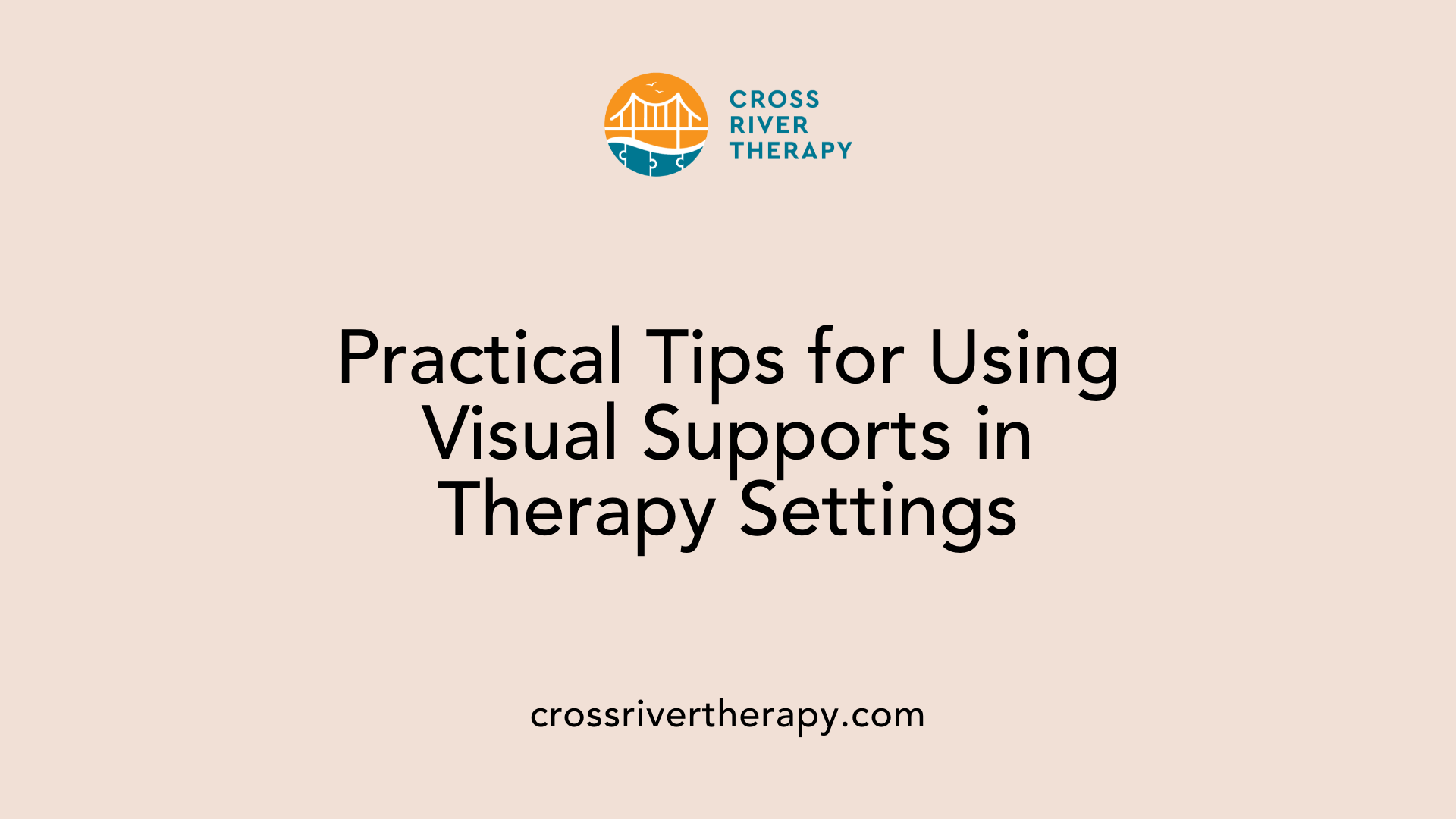
Tips for Creating and Using Visual Supports
- Personalization: Tailor visuals to meet the unique needs and preferences of each child. Use familiar images and symbols to enhance connection.
- Portability: Ensure visual supports are easily transportable for use in various environments—home, school, and therapy settings.
- Durability: Use durable materials to withstand daily wear and tear, making them suitable for continuous use.
- Simplicity: Break down complex tasks or instructions into simple, clear visuals to aid comprehension.
- Involvement: Engage the child in creating and using the visuals, which promotes ownership and encourages effective use.
Importance of Consistency and Collaboration
Consistency among caregivers, therapists, and family members is critical for the effectiveness of visual supports. Sharing strategies and reinforcing the same visuals across all settings fosters better understanding and skill acquisition for children with ASD. Regular meetings or communication ensures everyone is aligned, optimizing learning and emotional comfort.
Conclusion
The application of visual supports in ABA therapy is a proven method for reinforcing learning and communication in children with ASD. These tools are adaptable and effective, capable of transforming therapy sessions and daily activities into more manageable experiences. By diligently incorporating these supports, therapists and caregivers can work together to provide a more predictable and supportive environment for these children, paving the way for significant progress in their communication and behavioral skills. Continued research and innovation in this field promise to unveil even more potential, reaffirming the value of visual supports in autism therapy.
References
- How are Visual Supports Used in Applied Behavior Analysis?
- Visual supports - National Autistic Society
- Visual Supports to Optimize ABA Therapy for Children with Autism
- Visual Supports in ABA Therapy - ABATherapistJobs.com
- Visual supports - Speech and Language UK
- Resource library for educators - Speech and Language UK
- Creating a communication supportive environment: Primary



